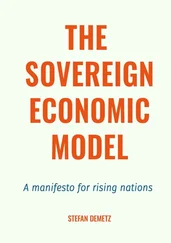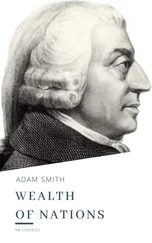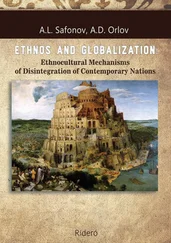In 1769 Arkwright, one of the dominant figures of the Industrial Revolution, patented his “water frame,” which was a huge improvement over Lewis’s machine. He formed a partnership with Jedediah Strutt and Samuel Need, who were hosiery manufacturers. In 1771 they built one of the world’s first factories, at Cromford. The new machines were powered by water, but Arkwright later made the crucial transition to steam power. By 1774 his firm employed six hundred workers, and he expanded aggressively, eventually setting up factories in Manchester, Matlock, Bath, and New Lanark in Scotland. Arkwright’s innovations were complemented by Hargreaves’s invention in 1764 of the spinning jenny, which was further developed by Samuel Crompton in 1779 into the “mule,” and later by Richard Roberts into the “self-acting mule.” The effects of these innovations were truly revolutionary: earlier in the century, it took 50,000 hours for hand spinners to spin one hundred pounds of cotton. Arkwright’s water frame could do it in 300 hours, and the self-acting mule in 135.
Along with the mechanization of spinning came the mechanization of weaving. An important first step was the invention of the flying shuttle by John Kay in 1733. Though it initially simply increased the productivity of hand weavers, its most enduring impact would be in opening the way to mechanized weaving. Building on the flying shuttle, Edmund Cartwright introduced the power loom in 1785, a first step in a series of innovations that would lead to machines replacing manual skills in weaving as they were also doing in spinning.
The English textile industry not only was the driving force behind the Industrial Revolution but also revolutionized the world economy. English exports, led by cotton textiles, doubled between 1780 and 1800. It was the growth in this sector that pulled ahead the whole economy. The combination of technological and organizational innovation provides the model for economic progress that transformed the economies of the world that became rich.
New people with new ideas were crucial to this transformation. Consider innovation in transportation. In England there were several waves of such innovations: first canals, then roads, and finally railways. In each of these waves the innovators were new men. Canals started to develop in England after 1770, and by 1810 they had linked up many of the most important manufacturing areas. As the Industrial Revolution unfolded, canals played an important role in reducing transportation costs for moving around the bulky new finished industrial goods, such as cotton textiles, and the inputs that went into them, particularly raw cotton and coal for the steam engines. Early innovators in building canals were men such as James Brindley, who was employed by the Duke of Bridgewater to build the Bridgewater Canal, which ended up linking the key industrial city of Manchester to the port of Liverpool. Born in rural Derbyshire, Brindley was a millwright by profession. His reputation for finding creative solutions to engineering problems came to the attention of the duke. He had no previous experience with transportation problems, which also was true of other great canal engineers such as Thomas Telford, who started life as a stonemason, or John Smeaton, an instrument maker and engineer.
Just as the great canal engineers had no previous connection to transportation, neither did the great road and railway engineers. John McAdam, who invented tarmac around 1816, was the second son of a minor aristocrat. The first steam train was built by Richard Trevithick in 1804. Trevithick’s father was involved in mining in Cornwall, and Richard entered the same business at an early age, becoming fascinated by steam engines used for pumping out the mines. More significant were the innovations of George Stephenson, the son of illiterate parents and the inventor of the famous train “The Rocket,” who began work as an engineman at a coal mine.
New men also drove the critical cotton textile industry. Some of the pioneers of this new industry were people who had previously been heavily involved in the production and trade of woolen cloths. John Foster, for example, employed seven hundred handloom weavers in the woolen industry at the time he switched to cotton and opened Black Dyke Mills in 1835. But men such as Foster were a minority. Only about one-fifth of the leading industrialists at this time had previously been involved in anything like manufacturing activities. This is not surprising. For one, the cotton industry developed in new towns in the north of England. Factories were a completely new way of organizing production. The woolen industry had been organized in a very different way, by “putting out” materials to individuals in their homes, who spun and wove on their own. Most of those in the woolen industry were therefore ill equipped to switch to cotton, as Foster did. Newcomers were needed to develop and use the new technologies. The rapid expansion of cotton decimated the wool industry—creative destruction in action.
Creative destruction redistributes not simply income and wealth, but also political power, as William Lee learned when he found the authorities so unreceptive to his invention because they feared its political consequences. As the industrial economy expanded in Manchester and Birmingham, the new factory owners and middle-class groups that emerged around them began to protest their disenfranchisement and the government policies opposed to their interests. Their prime candidate was the Corn Laws, which banned the import of “corn”—all grains and cereals, but principally wheat—if the price got too low, thus ensuring that the profits of large landowners were kept high. This policy was very good for big landowners who produced wheat, but bad for manufacturers, because they had to pay higher wages to compensate for the high price of bread.
With workers concentrated into new factories and industrial centers, it became easier to organize and riot. By the 1820s, the political exclusion of the new manufacturers and manufacturing centers was becoming untenable. On August 16, 1819, a meeting to protest the political system and the policies of the government was planned to be held in St. Peter’s Fields, Manchester. The organizer was Joseph Johnson, a local brush manufacturer and one of the founders of the radical newspaper the Manchester Observer . Other organizers included John Knight, a cotton manufacturer and reformer, and John Thacker Saxton, editor of the Manchester Observer . Sixty thousand protestors gathered, many holding banners such as “No Corn Laws,” “Universal Suffrage,” and “Vote by Ballot” (meaning voting should take place secretly, not openly, as it did in 1819). The authorities were very nervous about the meeting, and a force of six hundred cavalry of the Fifteenth Hussars had been assembled. As the speeches began, a local magistrate decided to issue a warrant for the arrest of the speakers. As police tried to enforce the warrant, they met with the opposition of the crowd, and fighting broke out. At this point the Hussars charged the crowd. Within a few chaotic minutes, eleven people were dead and probably six hundred wounded. The Manchester Observer called it the Peterloo Massacre.
But given the changes that had already taken place in economic and political institutions, long-run repression was not a solution in England. The Peterloo Massacre would remain an isolated incident. Following the riot, the political institutions in England gave way to the pressure, and the destabilizing threat of much wider social unrest, particularly after the 1830 revolution in France against Charles X, who had tried to restore the absolutism destroyed by the French Revolution of 1789. In 1832 the government passed the First Reform Act. It enfranchised Birmingham, Leeds, Manchester, and Sheffield, and broadened the base of voting so that manufacturers could be represented in Parliament. The consequent shift in political power moved policy in the direction favored by these newly represented interests; in 1846 they managed to get the hated Corn Laws repealed, demonstrating again that creative destruction meant a redistribution not just of income, but also of political power. And naturally, changes in the distribution of political power in time would lead to a further redistribution of income.
Читать дальше












